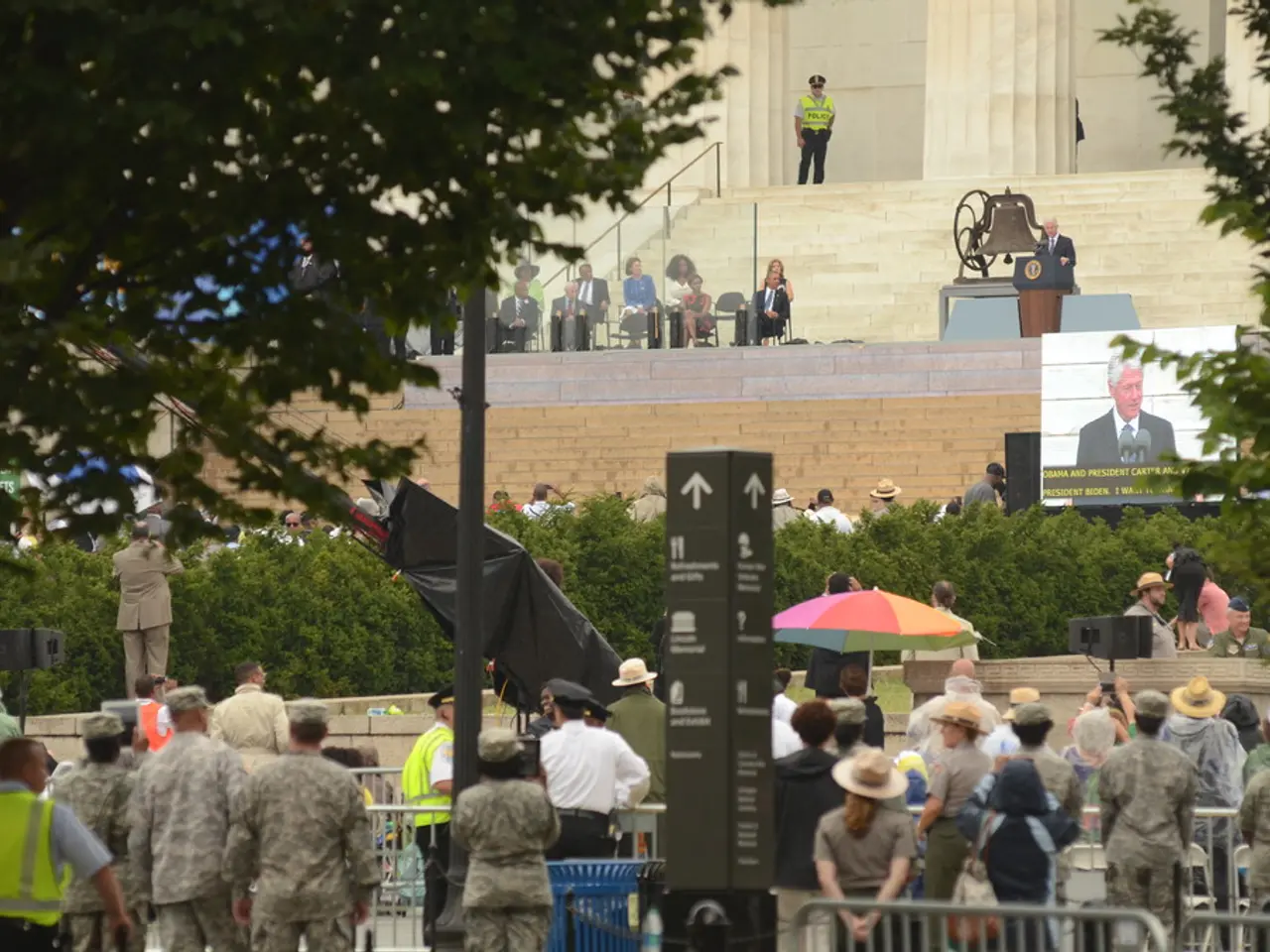Organizing a Sudden Journey: Insights into the Secret Service's Handling of Trump's Alaskan Summit
In the world of politics, the safety and security of a president is paramount. When it comes to last-minute presidential summits, the planning process becomes even more complex, requiring an extraordinary effort to ensure the safety of all parties involved.
The Secret Service, the agency responsible for the safety of the president, plays a crucial role in this process. For a typical presidential visit, the planning period can range from two to 2 ½ weeks, but for a foreign trip, more time is required due to factors such as country clearances, visas, and weapons permits.
Behind the scenes, the Secret Service meticulously plans every detail, from booking travel and figuring out the motorcade route, to planning for potential emergencies. This includes identifying the location of the closest hospital and devising a plan to get there swiftly.
In the case of a last-minute summit, such as the one involving President Trump, President Zelenskyy, and European leaders on Ukraine security in August 2025, the compressed timeframe demanded extraordinary effort to finalize details. The high geopolitical risk required dynamic evolutions in the security plans.
The complexity of last-minute summit security planning is influenced by several factors. Time constraints and urgency, the number and nationality of participants, location and venue security, threat environment, coordination among agencies, logistics and communication, and potential natural disasters are all key considerations.
For example, the Secret Service had to take into account potential natural disasters such as earthquakes and volcanic eruptions in their planning for the Alaska summit. In contrast, for a foreign trip, the agency would need to factor in country-specific risks and protocols.
The Secret Service, often referred to as the 'beans, bullets and Band-Aids' by the military, and 'rental cars, flights, and hotel rooms' by the Secret Service itself, is a solid agency with professional agents. Bill Gage, a former Secret Service agent who is currently a security consultant for SafeHaven Security Group, stated that the criticism of the agency following the two assassination attempts on Donald Trump last summer was unfair and out of bounds.
While the precise time varies, last-minute summit security planning is a highly complex process that can be executed in a matter of days with sufficient resources. It is influenced heavily by participant profile, threat level, and venue. The major political conventions in the United States, on the other hand, take about a year to 18 months of planning.
In a presidential visit, there are many aspects that are not visible to the public, such as planning for potential emergencies and the location of the closest hospital. The military refers to the planning for a presidential trip as "beans, bullets and Band-Aids," while the Secret Service refers to it as rental cars, flights, and hotel rooms. Despite the apparent differences, their shared goal remains the same: to keep everybody safe.
- In light of the complexity of last-minute summit security planning, the Secret Service must consider various factors such as time constraints, number and nationality of participants, location and venue security, threat environment, coordination among agencies, logistics and communication, potential natural disasters, and participant profile and threat level.
- Given the intense nature of last-minute summits, the planning process for these events is often significantly more detailed and demanding compared to a typical presidential visit, requiring an extraordinary effort to ensure the safety of all involved parties, including identifying the location of the closest hospital in case of emergencies.





